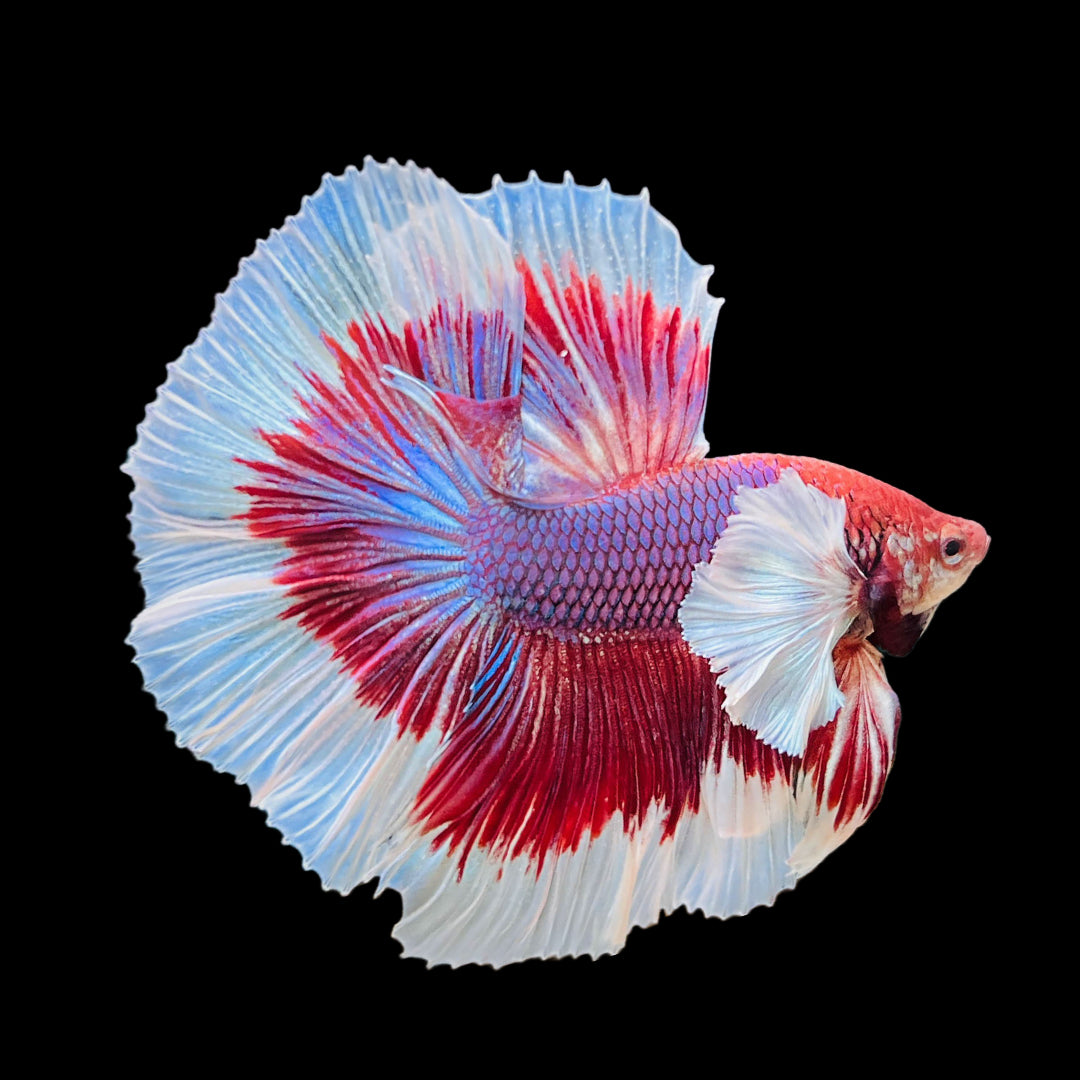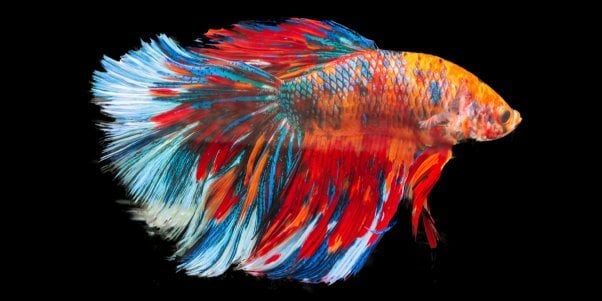The Ultimate Betta Fish Treatment Guide for New Pet Dog Owners
The Ultimate Betta Fish Treatment Guide for New Pet Dog Owners
Blog Article
Breeding Betta Fish: a Comprehensive Step-By-Step Guide to Successfully Raising Child Bettas From Eggs to Their Adult Years
Breeding Betta fish is a precise endeavor that needs mindful preparation and implementation to ensure the successful growth of fry from eggs to grow fish. Choosing genetically varied breeding couple with preferable qualities is just the start; developing an optimal setting and understanding the details of the reproducing process are similarly critical. As the male Betta carefully constructs a bubble nest and guards the valuable eggs, the subsequent phases of care and change need interest to detail and knowledge of best practices. Exactly how does one navigate the challenging yet fulfilling path of supporting these dynamic animals to the adult years?

Choosing Breeding Pairs
When embarking on the journey of breeding Betta fish, choosing the ideal reproduction pairs is essential to accomplishing preferable traits and a healthy lineage - betta fish. The primary step in this process is to recognize the details qualities you desire to boost or protect, such as shade, fin type, and body form. It is necessary to select genetically varied pairs to avoid inbreeding, which can bring about health and wellness issues and unfavorable features
Examine potential reproducing candidates thoroughly. A healthy male Betta must show dynamic shades, an energetic demeanor, and well-formed fins, while the lady must also display lively pigmentation and a rounded stubborn belly, indicating readiness for spawning. Observing the character of both fish is vital, as aggressive or extremely timid individuals might not breed successfully.
Keeping records of the parent fish's origins can assist you track genetic attributes and potential concerns. Inevitably, spending time in the choice process will dramatically enhance the likelihood of generating solid, dynamic spawn that fulfill your breeding objectives.

Preparing the Breeding Container
Developing an optimal breeding atmosphere is an essential step after choosing appropriate pairs for Betta fish. The breeding tank ought to be particularly designed to offer convenience and boost the all-natural reproduction behaviors of the fish. Start with a container dimension of at the very least 10 gallons to make certain appropriate area for both the male and women Bettas.
Keep a gentle filtering system to maintain the water tidy while avoiding solid currents that can emphasize the fish. Additionally, an air rock can be contributed to provide oxygenation without interfering with the water surface area way too much.
Temperature law is important; goal for a stable series of 78-82 ° F(25-28 ° C) utilizing a reputable heating system. The pH degree need to be kept between 6.5 and 7.5, and regular water changes are required to guarantee high water high quality.
Include floating plants or spawning sponges to produce hiding places for the woman, while also urging bubble nest structure by the man - betta fish. Make sure their explanation the tank is complimentary from sharp decors and any type of prospective threats, as the welfare of the fish ought to constantly be prioritized throughout this vital phase of reproduction.
The Reproduction Process
Generally, the reproducing process for Betta fish entails a collection of distinctive and observable behaviors that show preparedness for reproduction. The male Betta starts by building a bubble nest at the water's surface area, which works as a website for the fertilized eggs. This nest is important, as it offers a risk-free environment for the eggs till they hatch.
As soon as the nest is established, the male will certainly display courtship behaviors, such as flaring his fins and exhibiting lively shades to bring in the female. The woman, upon noticing the male's preparedness, will respond by presenting vertical stripes along her body, signifying her receptiveness.
When the women strategies, the male involves in a mating dancing, often bring about an accept understood as the "spawning." During this embrace, the lady launches her eggs, which the male fertilizes instantly. The fed eggs then are up to the bubble nest, where the male meticulously collects and returns them to the nest. Following this, the male presumes duty for protecting the nest and making certain the safety of the eggs until they hatch, normally within 24-36 hours. This phase is essential in the reproducing procedure, laying the foundation for effective fry advancement.
Taking Care Of Betta Fry
Looking after Betta fry needs careful interest to their atmosphere and nourishment to reference make sure healthy growth and growth. After hatching, Betta fry are exceptionally small and vulnerable, demanding a stable and tidy environment. Keeping a water temperature level between 78 ° F and 80 ° F is critical, as Betta fry grow in cozy problems. Furthermore, make sure that the water is free of dangerous toxic substances; routine water modifications of 10-20% are suggested to preserve optimum water top quality.
Feeding Betta fry is similarly crucial. At first, they ought to be provided infusoria or carefully crushed premium fry food, as their mouths are as well little to handle larger fragments. As they grow, you can slowly introduce bigger foods, such as child brine shrimp or powdered flakes, to ensure they obtain adequate nutrition. Feed them small quantities several times a day, taking care not to overfeed, which can lead to water high quality problems.
Transitioning to Grownup Bettas
As Betta fry fully grown, transitioning them to adult Bettas is a crucial phase that needs careful management of their atmosphere and social interactions. This procedure generally starts when the fry get to around six weeks old, whereupon they can be slowly presented to a much more organized living environment.
To promote this transition, it is vital to guarantee that the water specifications-- such as temperature, pH, and ammonia degrees-- are optimal and secure. Adult Betta fish flourish in warm water (around 78-80 ° F) with a pH of 6.5 to 7.5. Slowly accustom the fry to these problems to decrease stress.
Social interactions are an additional crucial aspect; male Bettas are notoriously territorial and hostile. It is suggested to separate men into individual tanks as they grow. Female Bettas can be housed together, however care ought to be taken to check for indicators of aggressiveness.
Additionally, nutritional changes must be made as the check here fry grow. Include high-grade pellets and live foods to sustain their development and wellness. By handling these aspects properly, you can advertise a successful transition to the adult years for your Betta fish.

Verdict
Effective breeding of Betta fish requires careful interest to detail throughout the entire process, from choosing genetically diverse pairs to giving optimal treatment for fry. Additionally, a well balanced diet plan and gradual adaptation to adult atmospheres are critical for the development and growth of Betta fish.
Report this page